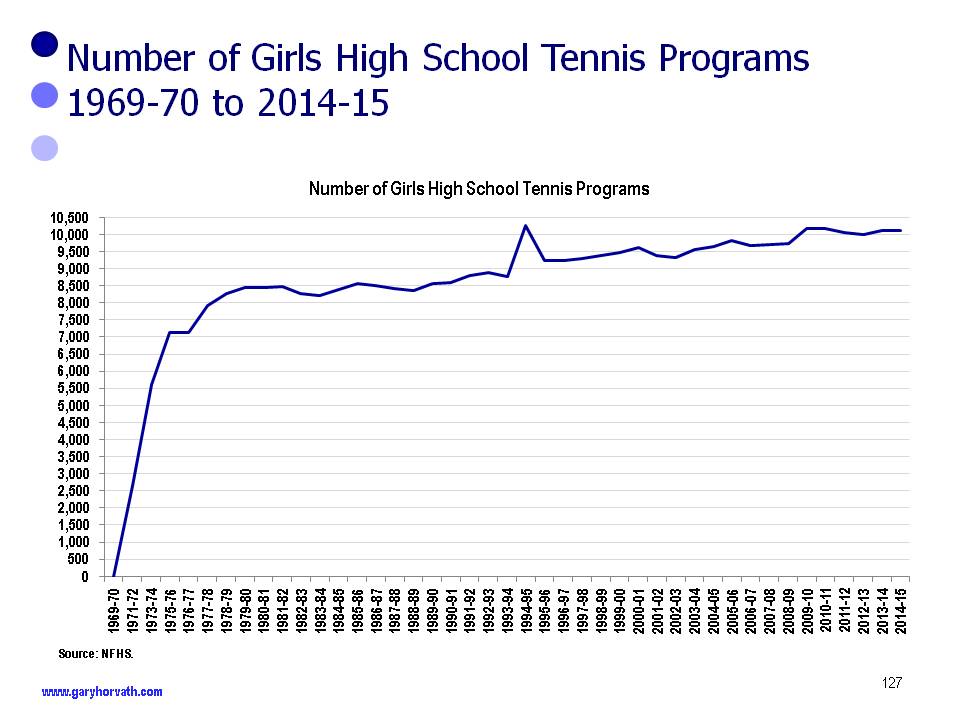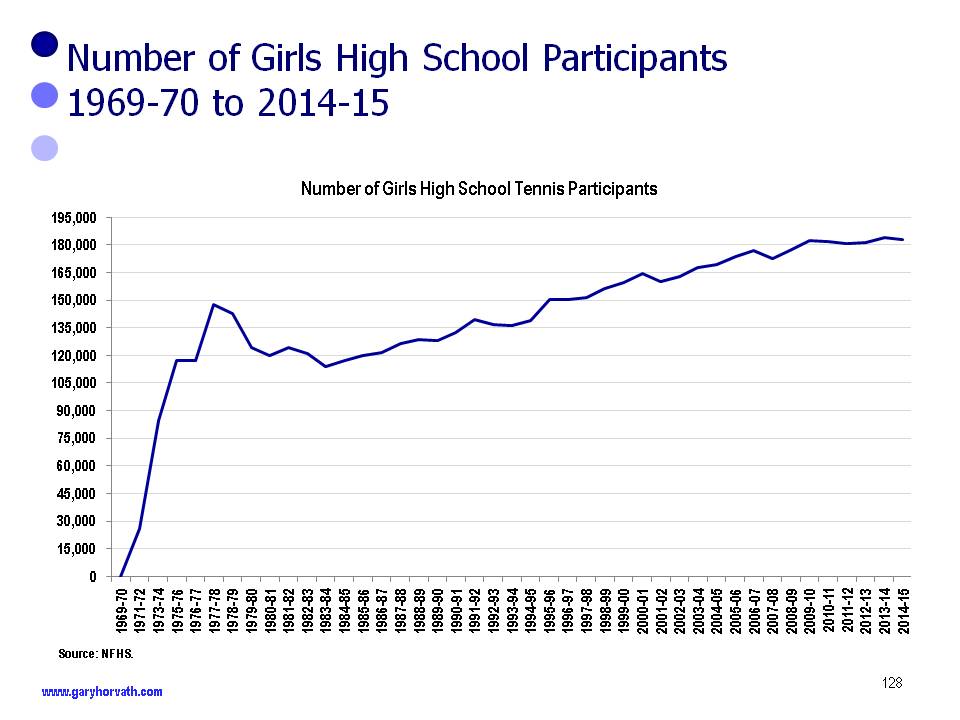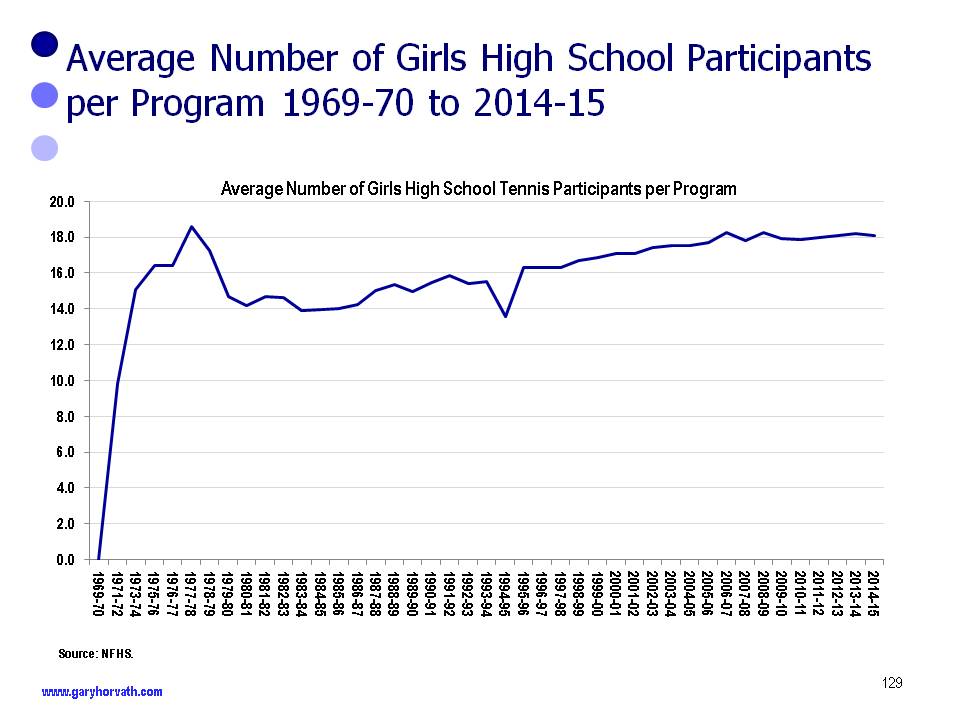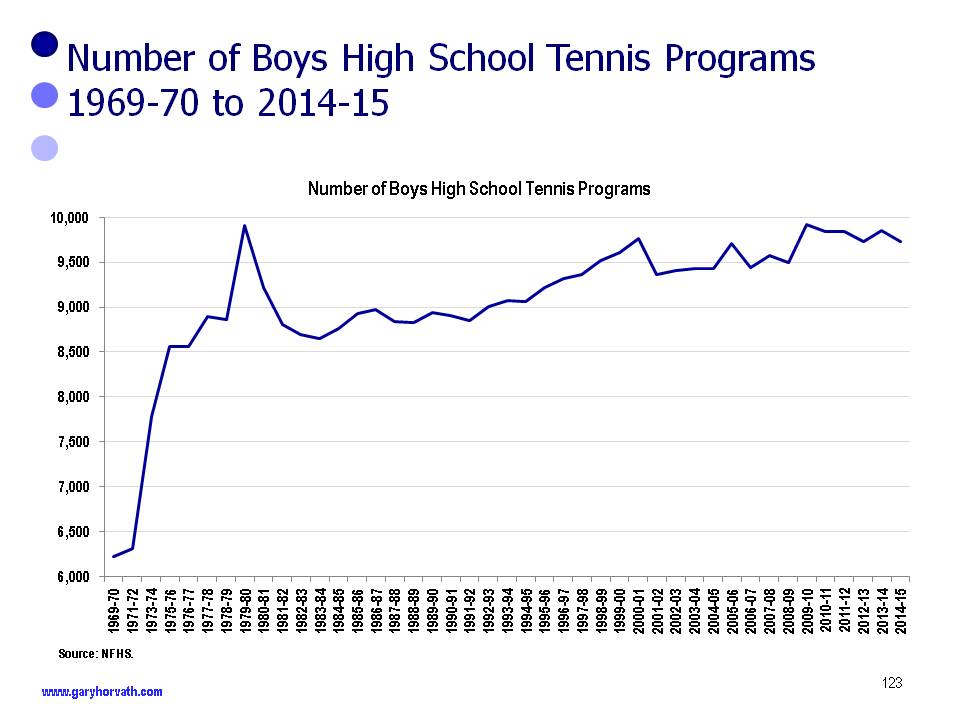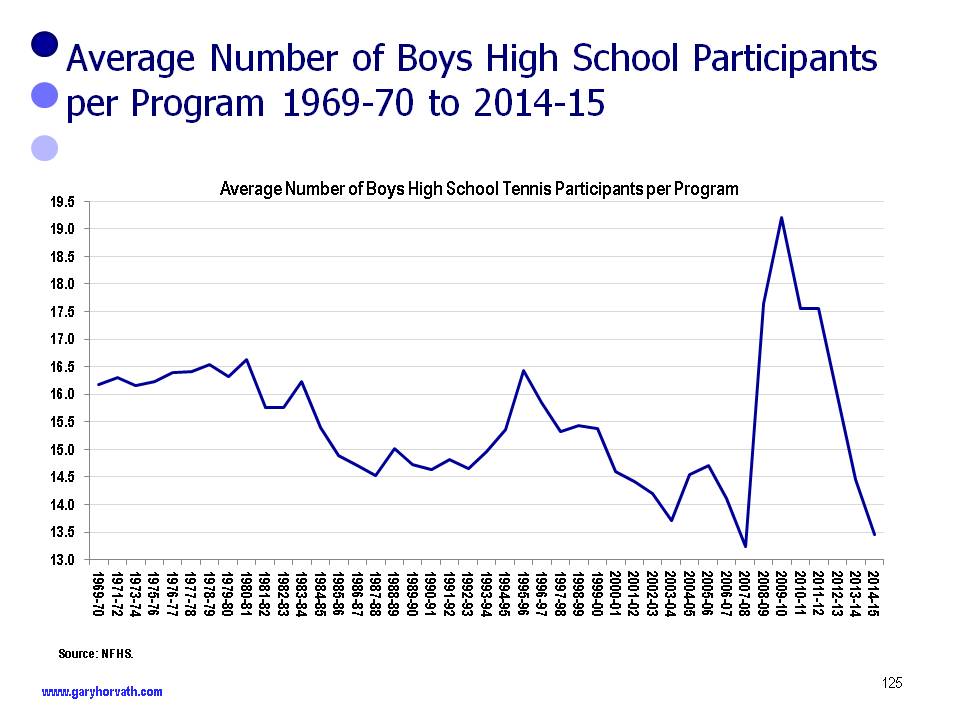This post summarizes participation in U.S. girls tennis programs based on data from the National Federation of State High School Associations (http://www.nfhs.org).
In 1969-70 there were no tennis high school programs in the United States. Participation in the sport exploded overnight when the President signed Title IX into law in 1972. Title IX prohibits discrimination on the basis of gender in any federally funded education program or activity. In addition, interest in the sport rose precipitously as a result of the Billie Jean King vs. Bobby Riggs match and the subsequent tennis boom. By 1979-80 there were 8,443 high school programs.
For the next decade the number of girls programs remained flat and there were 8,550 programs in 1989-90. Steady growth has occurred since that date. In 1994-95 the data shows there were 10,270 teams, although this number appears to be an anomaly or a glitch in the data.
In 2014-2015 there were 10,099 programs.
As might be expected, the trend for the number of participants is similar to the number of programs. In 1969-70 there were no participants. Between then and 1977-78 the number of participants the number of participants reached 147,365.
As a result of the bust in the tennis industry, participation plummeted to 114,177 in the 1983-84 season. From that point, the number or participants increased gradually to 182,395 in 2009-2010. It has remained flat since then.
In 2014-25 there were 182,876 participants.
Title IX is the primary reason for the growth of the sport. Other factors that have caused participation to rise and fall are the overall popularity of tennis and competition from other girls sports. Other factors impacting the number of participants are the size of school budgets, local feeder programs, and the number of qualified coaches in the school districts.
Between 1999-00 and 2014-15 the number of programs increased at an annualized rate of 0.43% while the number of participants rose by 0.91%.
The average number of participants per program ranged from 13.6 to 18.6 players.
High school girls tennis is a small, but important part of the U.S. tennis population. The number of participants is likely to grow at a rate similar to the growth in the U.S. population.
